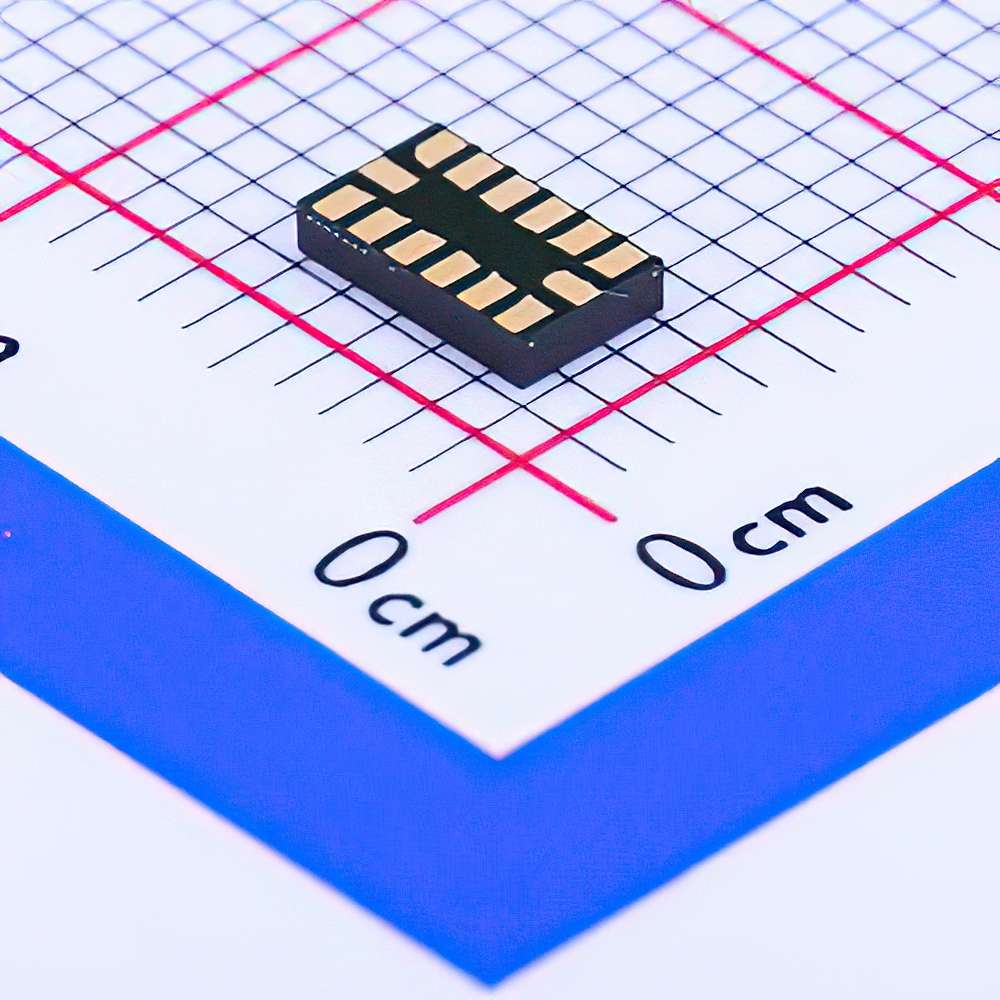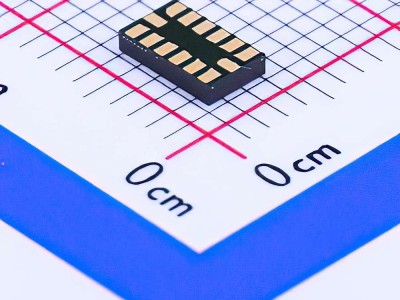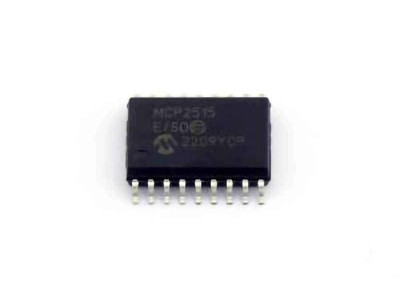
The ADI ADXL345 three-axis acceleration Sensor plays a pivotal role in modern posture detection systems. With the advent of wearable technology, smart health devices, and fitness trackers, this sensor has become integral in accurately measuring motion and positioning. This article explores how the ADXL345 is employed in posture detection applications, its advantages, and how it can be integrated into a variety of systems. From fitness to healthcare, the possibilities are endless.
ADXL345, three-axis acceleration sensor, posture detection, wearable technology, smart health devices, motion tracking, sensor integration, posture monitoring, fitness trackers, IoT applications
Understanding the ADXL345 Sensor and its Role in Posture Detection
Introduction to the ADXL345 Sensor
In the world of motion sensing, the ADXL345 sensor stands out due to its precision, small size, and Power efficiency. Manufactured by Analog Devices, the ADXL345 is a digital, three-axis accelerometer capable of measuring accelerations in all three spatial dimensions (X, Y, and Z). This makes it a crucial component in numerous applications ranging from fitness tracking to posture detection, helping both users and systems detect and respond to body movements.
As modern society increasingly emphasizes health and wellness, posture detection has gained significant attention, particularly for its potential to prevent musculoskeletal disorders, improve ergonomics, and monitor the effectiveness of physical therapy. The ADXL345, with its low power consumption and high precision, is ideal for continuous monitoring in a variety of posture detection applications, from wearable devices to smart healthcare solutions.
How the ADXL345 Works
The ADXL345 sensor uses a micro-electromechanical system (MEMS) to measure the acceleration forces acting on it. It includes a sensing element that can detect static acceleration, such as gravity, or dynamic acceleration, like movement or vibration. The sensor has a range of ±2g, ±4g, ±8g, and ±16g, making it versatile for different types of applications. The digital output data can be accessed via I2C or SPI communication interface s, which allows easy integration with microcontrollers and other electronic devices.
In a posture detection application, the ADXL345 measures the acceleration in real-time, detecting changes in the user’s body orientation and movement. By processing this data, the system can determine the posture or position of the user. These readings can be further analyzed to provide feedback, which can be used to improve posture or offer real-time corrective suggestions.
The Importance of Posture Detection
Posture detection has become a priority due to the growing concerns around sedentary lifestyles and workplace ergonomics. Poor posture can lead to several health issues, including back pain, neck strain, poor circulation, and headaches. It is also linked to more severe problems like spinal misalignment and joint issues over time.
Posture detection systems using sensors like the ADXL345 allow for continuous monitoring, offering real-time feedback that can be crucial in preventing long-term damage. In settings like offices, schools, or during physical therapy, users can be alerted when they adopt an improper posture, enabling them to make quick adjustments.
Wearable Technology and Posture Detection
Wearable devices such as smartwatches, fitness trackers, and health monitors have become commonplace for tracking physical activity, sleep patterns, and other aspects of wellness. As these devices have evolved, the integration of posture detection has emerged as a valuable feature. The ADXL345 sensor is frequently used in these devices, enabling them to not only track activity but also monitor the user's posture throughout the day.
For example, a wearable device using the ADXL345 can detect if a person is slouching or sitting with an improper angle for an extended period. With integrated alerts, the system could prompt the user to correct their posture, thus reducing the risks of strain and discomfort associated with poor body alignment.
Benefits of Using the ADXL345 in Posture Detection
Small Size and Flexibility: The ADXL345 sensor is incredibly compact and lightweight, making it ideal for integration into small, wearable devices without adding bulk or discomfort to the user.
Low Power Consumption: One of the standout features of the ADXL345 is its low power consumption, which is crucial for battery-operated devices like fitness trackers and wearable health monitors. This ensures that posture detection systems can run for long periods without the need for frequent recharging.
High Accuracy and Sensitivity: The sensor's ability to detect even the smallest movements allows for highly accurate posture detection. This ensures that the system can differentiate between slight changes in body position, allowing for precise feedback.
Cost-Effective: Compared to other sensors, the ADXL345 offers an excellent balance of performance and cost. It provides the accuracy needed for posture detection without the expense of more complex solutions.
ADXL345-Based Posture Detection Systems
There are various systems built around the ADXL345 that can monitor posture in real-time. One popular application is in wearable health devices, such as smartwatches and fitness bands, that help users track not only their activity but also their sitting and standing positions throughout the day. These devices can be programmed to alert users when their posture deviates from an optimal position.
In more advanced systems, such as those used in physical therapy or rehabilitation, the ADXL345 sensor can track the progress of a patient’s movement patterns and posture over time. By analyzing the data collected, therapists can adjust their treatment plans to better address posture-related issues. For instance, a physical therapist may use the data from an ADXL345-equipped device to monitor the alignment of a patient’s spine during rehabilitation exercises, offering insights into whether corrective actions are having the desired effect.
Real-World Applications and Integration of the ADXL345 in Posture Detection
Integration of ADXL345 in Fitness and Health Monitoring Devices
In the realm of fitness and health, maintaining good posture is essential for achieving optimal performance and avoiding injury. The ADXL345 sensor is a core component in wearable fitness devices that help users monitor their body alignment during exercise and everyday activities.
Fitness trackers, for example, use the ADXL345 to detect changes in posture when performing exercises like squats, lunges, or deadlifts. These sensors can determine whether the user is maintaining correct form, ensuring that they are performing movements safely and efficiently. If the sensor detects improper posture, it can alert the user through a vibration or visual cue on the display, prompting them to adjust their form.
In addition, smart sports equipment such as fitness mats or yoga mats embedded with ADXL345 sensors can offer real-time feedback during workouts. These devices not only track movements but can also monitor how effectively the user is engaging their muscles during a routine. This real-time posture feedback can lead to better outcomes in fitness training by encouraging users to maintain proper alignment and avoid strain.
ADXL345 in Workplace Ergonomics
The workplace is another area where posture detection is crucial, particularly with the rise of sedentary desk jobs. Poor ergonomic practices, such as sitting for prolonged periods with improper posture, can result in back and neck pain, as well as long-term musculoskeletal disorders. To combat this, many companies are turning to posture detection systems integrated with ADXL345 sensors.
For instance, smart office chairs or seat cushions equipped with the ADXL345 can monitor a user's sitting posture. These devices can be programmed to detect when a person is slouching or leaning in a way that may cause discomfort or harm. An integrated feedback system, such as an alert on a smartphone app, can remind the user to adjust their position or take a break to move.
In addition to individual posture correction, the data from these devices can also be used to assess overall workplace ergonomics. By analyzing patterns in posture-related behavior, businesses can optimize the design of office spaces, desks, and chairs to encourage better health practices among employees.
The Role of ADXL345 in Physical Therapy and Rehabilitation
Posture detection powered by the ADXL345 sensor is a game-changer in the field of physical therapy and rehabilitation. For patients recovering from injuries or surgeries, maintaining the right posture and movement is essential to prevent re-injury and promote healing. Traditional methods of monitoring posture often require the presence of a therapist, but with ADXL345-equipped devices, patients can receive continuous, real-time monitoring at home.
Wearable devices designed for physical therapy may be programmed to track and assess a patient’s posture as they perform prescribed exercises. The device can send alerts when the user is not executing the movements correctly, offering corrective guidance and reducing the risk of incorrect practices that could hinder recovery.
In addition to immediate feedback, long-term data gathered by the ADXL345 can also be used by therapists to track progress and adjust treatment plans. Over time, this data can provide a clearer picture of the patient’s improvement, allowing for personalized care and more targeted rehabilitation.
Future of Posture Detection with ADXL345
The future of posture detection powered by the ADXL345 looks promising, especially with the continued growth of wearable technologies and smart healthcare applications. With the rise of the Internet of Things (IoT), sensors like the ADXL345 are becoming more integrated into everyday objects, allowing for a seamless experience when monitoring health and wellness.
In the coming years, we can expect even more innovative applications in areas like augmented reality (AR) and virtual reality (VR). For instance, posture detection systems could be integrated into VR headsets to monitor the user's physical posture while engaged in immersive experiences, ensuring they maintain proper alignment during gameplay or training.
Moreover, advancements in machine learning and AI could enable even more sophisticated analysis of posture data, offering users personalized insights and recommendations for improving their body alignment. As the technology evolves, we could see ADXL345-based systems capable of detecting not only body posture but also finer details of movement, providing deeper insights into an individual’s health status.
Conclusion
The ADXL345 three-axis acceleration sensor plays a vital role in the development of posture detection systems, offering numerous benefits in health, fitness, workplace ergonomics, and rehabilitation. Its small size, accuracy, and power efficiency make it an ideal choice for wearable devices and IoT applications, where real-time motion and posture monitoring are essential.
As we move forward into an era of smart technology and personalized healthcare, the role of sensors like the ADXL345 in posture detection will continue to grow. Whether it's improving fitness routines, enhancing workplace ergonomics, or aiding in physical rehabilitation, the potential of the ADXL345 is vast. By leveraging this powerful sensor, we can create a more health-conscious and posture-aware society, where individuals are empowered to take control of their physical well-being.
If you are looking for more information on commonly used Electronic Components Models or about Electronic Components Product Catalog datasheets, compile all purchasing and CAD information into one place.


